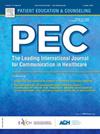DNA-poli: Design and development of a digital platform for family communication support and predictive genetic counseling on inherited diseases
IF 2.9
2区 医学
Q2 PUBLIC, ENVIRONMENTAL & OCCUPATIONAL HEALTH
引用次数: 0
Abstract
Objectives
By developing a digital platform (“DNA-poli”) we aim to improve the uptake and efficiency of predictive genetic counseling and cascade testing for relatives at-risk of inherited conditions. This is crucial for reducing disease morbidity and mortality while meeting the growing demand for genetic counseling. We outline the design, development, and final concept and prototype of DNA-poli and discuss the challenges faced and how these were addressed.
Methods
We followed an approach based on the Design Thinking and Human-Centered Design methods, which entails four stages: 1) Discover/Define, 2) Design, 3) Develop, and 4) Deliver. Stakeholders were actively involved through interviews, focus groups, and sounding board consultations. Two inherited cardiac conditions (hypertrophic cardiomyopathy and dilated cardiomyopathy) served as the first use case.
Results
The DNA-poli prototype is a digital outpatient clinic for predictive counseling on inherited conditions and cascade testing. It facilitates both pre-test and post-test genetic counseling, including information provision on specific conditions and tests, decision support, collecting medical information from a counselee, and return of results. ARRs can process relevant information online at their convenience and can request genetic tests locally after a short teleconsultation with a healthcare professional. A conversational agent is incorporated to answer questions and collect patient characteristics.
Conclusions
DNA-poli is the first digital cardiogenetics platform to encompass the full genetic care pathway for family communication and predictive genetic counseling. Development challenges related to logistical implementation, ethical and legal considerations, and ensuring quality of care standards.
Practice implications
DNA-poli allows timely, efficient, and flexible access to predictive counseling, supporting probands with informing their ARRs. ARRs have access to personalized information and modules to support decision-making at their convenience.
求助全文
约1分钟内获得全文
求助全文
来源期刊

Patient Education and Counseling
医学-公共卫生、环境卫生与职业卫生
CiteScore
5.60
自引率
11.40%
发文量
384
审稿时长
46 days
期刊介绍:
Patient Education and Counseling is an interdisciplinary, international journal for patient education and health promotion researchers, managers and clinicians. The journal seeks to explore and elucidate the educational, counseling and communication models in health care. Its aim is to provide a forum for fundamental as well as applied research, and to promote the study of organizational issues involved with the delivery of patient education, counseling, health promotion services and training models in improving communication between providers and patients.
 求助内容:
求助内容: 应助结果提醒方式:
应助结果提醒方式:


